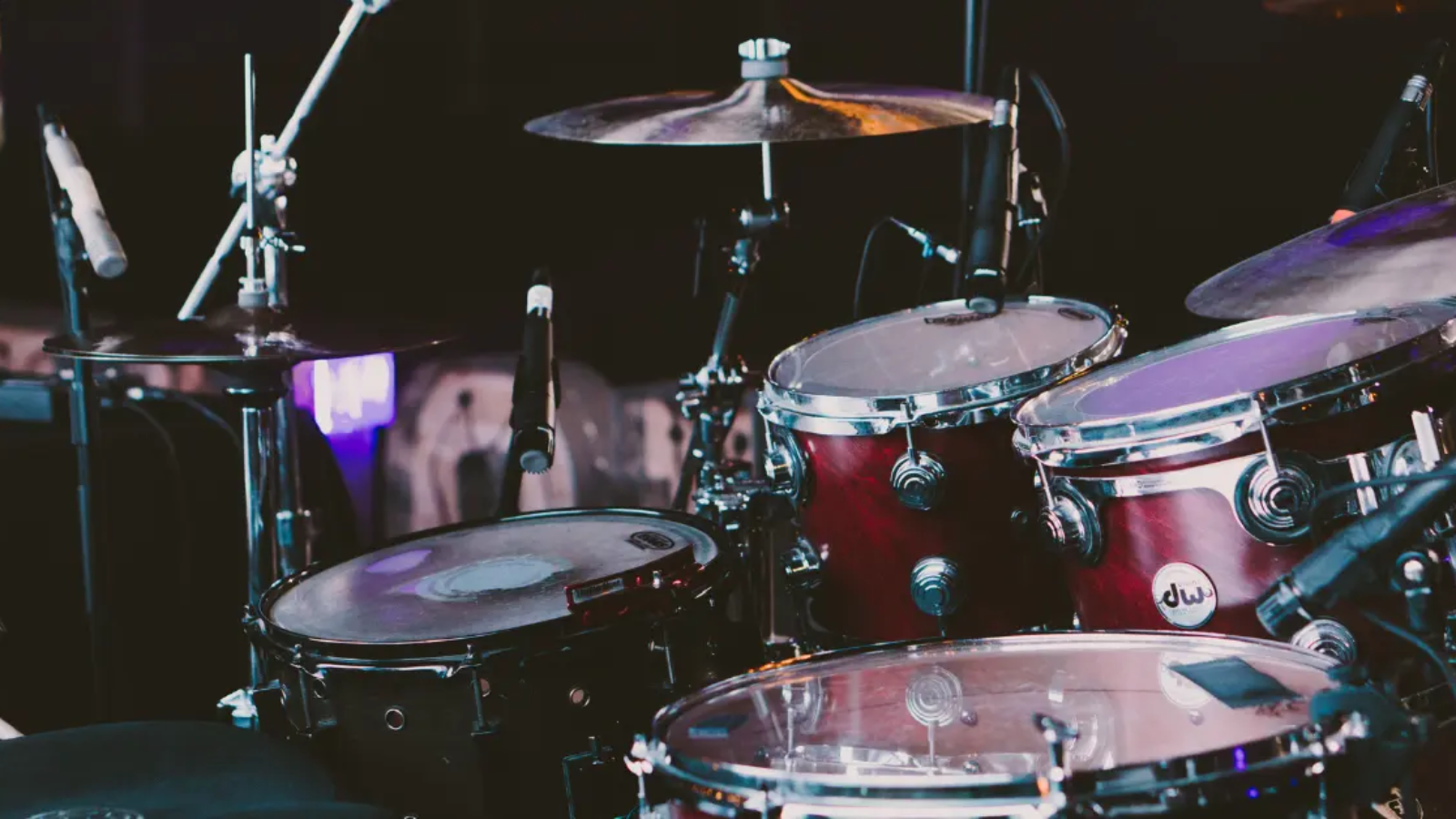A step-by-step guide for beginners on how to teach yourself drums, including tips, techniques, and practice routines.

Learning how to play the drums is an exciting journey, and what’s even better is that you don’t necessarily need to take formal lessons to get started. Whether you’ve always dreamed of playing the drums or just want to pick up a new hobby, teaching yourself drums is entirely possible. With the right guidance and practice, you can become a skilled drummer in no time.
In this guide, we’ll explore step-by-step instructions on how to teach yourself drums, covering everything from understanding basic techniques to developing your rhythm and building effective practice routines. Whether you have a full drum kit or just a practice pad, you can get started with minimal equipment and still make significant progress.
1. Understanding the Basics: What You Need to Know
Before you dive into learning how to teach yourself drums, it’s essential to get familiar with the basic components of drumming. The drum kit consists of several key parts, including the snare drum, bass drum, toms, cymbals, and hi-hat. Each component plays a vital role in creating the overall sound, and understanding how they work together will help you structure your playing.
Key Drum Kit Parts
- Snare Drum: The snare drum produces a sharp, crisp sound and is often used for backbeats.
- Bass Drum: Played with a foot pedal, the bass drum provides the foundational beat.
- Tom Toms: These drums vary in size and are used for fills and transitions.
- Cymbals: Including the crash and ride cymbals, these add texture and variety to your rhythm.
- Hi-Hat: A pair of cymbals controlled by the foot, it’s essential for keeping time.
Now that you know what each part of the drum kit does, let’s look at the basic techniques and how you can begin learning them on your own.
2. Mastering the Basic Drumming Techniques
Drumming, like any other instrument, requires developing essential skills. Before you start playing full songs, it’s important to build a solid foundation. Focus on the following areas:
- Grip and Hand Position: The way you hold your drumsticks is crucial for control and comfort. The most common grip is the matched grip, where both hands hold the sticks similarly. Practice holding the drumsticks loosely but firmly to avoid tension.
- Basic Strokes: Start by practicing the basic stroke techniques, such as the single stroke (alternating between hands) and double stroke (two strokes per hand).
- Foot Pedal Technique: Get familiar with the bass drum pedal and how to operate it. Focus on developing your foot technique, making sure you can play clean and consistent beats with your foot.
- Basic Drum Rudiments: Rudiments are the building blocks of drumming and will serve as the foundation for more advanced techniques. Start with simple rudiments like the single stroke roll, double stroke roll, and flam.
Once you’ve grasped these basics, practice them consistently to build your muscle memory and develop a natural feel for the drums.
3. Learning to Read Drum Notation
While not strictly necessary for beginners, learning how to read drum notation can help you progress faster. Drum notation is similar to sheet music but uses specific symbols to represent different parts of the drum kit.
- Time Signatures: Most music is written in 4/4 time, meaning there are four beats in each measure. Understanding time signatures will help you follow along with music more easily.
- Drum Notes: In drum notation, different notes represent specific drums or cymbals. The snare drum is typically represented by a note on the second space of the staff, while the bass drum is represented by a note on the bottom space.
- Rests and Dynamics: Just like in regular music notation, rests indicate silence, and dynamic markings show how loudly or softly to play.
While you can teach yourself drums without reading notation, understanding it can enhance your ability to learn songs more quickly and develop your drumming skills.
4. Building Your Practice Routine
One of the key aspects of teaching yourself drums is having a structured practice routine. The more time you dedicate to practice, the faster you’ll see improvement. But consistency is more important than practicing for long periods in a single session.
A Sample Drumming Practice Routine
- Warm-up (5-10 minutes): Start by warming up your hands and feet. Practice simple rudiments to loosen up.
- Technique (10-15 minutes): Focus on one technique, such as improving your single strokes, double strokes, or foot control.
- Song Work (15-20 minutes): Choose a simple song or rhythm to work on. Break it down into sections and practice each part slowly before speeding up.
- Cool-down (5 minutes): Finish your practice session with some relaxed drumming or freestyle to cool down.
Make sure to track your progress and revisit areas where you feel you need improvement. Practicing at least 30 minutes to an hour every day is ideal for building your drumming skills.
5. Developing Your Timing and Rhythm
Drumming is all about timing and rhythm. One of the biggest challenges for self-taught drummers is developing a good sense of timing. Thankfully, there are a few strategies you can use to improve this skill:
- Use a Metronome: A metronome is an essential tool for practicing timing. It helps you stay on beat and gradually increase your tempo as you improve.
- Count Out Loud: Counting out loud as you play can help you internalize the rhythm and improve your timing.
- Practice with Music: Once you’ve got the basics down, try playing along with music to develop your timing in real musical contexts. Pick songs with a steady rhythm and simple beats, and focus on staying in time.
The more you practice, the better your timing will become, and soon you’ll be able to play more complex rhythms and fills.
6. Learning to Play Songs on Drums
Once you’ve mastered basic techniques and rhythm, it’s time to start learning actual songs. Start with simple songs that feature basic beats and rhythms. Here’s a process for learning songs on drums:
- Choose a Simple Song: Pick a song with a clear, simple drum pattern. Songs like “We Will Rock You” by Queen or “Billie Jean” by Michael Jackson are perfect for beginners.
- Break It Down: Break the song into sections—verse, chorus, bridge, etc.—and learn each section separately.
- Play Along: Once you’ve learned the different sections, play along with the original song. Start slowly and gradually increase your speed.
- Add Fills and Variations: Once you’re comfortable with the basic drum part, experiment with adding fills or changing up the rhythm to make it your own.
Learning to play songs will keep you motivated and give you a sense of accomplishment as you improve.
7. Overcoming Challenges and Staying Motivated
Self-teaching can be tough at times, especially when progress feels slow. Here are some tips to help you stay motivated:
- Set Small Goals: Break down your larger goals into smaller, achievable tasks.
- Record Yourself: Record your practice sessions and listen back to track your improvement.
- Stay Patient: Drumming requires time and patience, so don’t get discouraged if you don’t see instant results.
With dedication and perseverance, you’ll improve and become a confident self-taught drummer.
CONCLUSION
Learning how to teach yourself drums can be a rewarding and fulfilling experience. While it may take time and effort to develop your skills, the key is consistency and focus. By mastering the basics, building a solid practice routine, and gradually progressing to more complex techniques, you can become an accomplished drummer on your own. Whether you’re playing for fun or pursuing drumming professionally, the skills you develop along the way will enhance your musical journey.
So grab your drumsticks, start practicing, and enjoy the rhythm of your new musical adventure!
At NMS Musicals, we offer a comprehensive range of musical instruments, including percussion, string, wind, and keyboard instruments. Our services encompass sales, expert servicing, and the manufacture of leather instruments. Explore our diverse collection and find the perfect instrument to suit your musical needs.
Visit our website to browse our offerings: nmsmusicals.in
For a closer look at our products, check out our shop page: nmsmusicals.in/shop
Stay connected with us through our social media channels:
- Facebook: https://www.facebook.com/nmsmusicalinstruments/
- Instagram: https://www.instagram.com/nmsmusicals/?hl=en
- YouTube: youtube.com/@nmsmusicals
Our shop locations are:
- Puducherry: 149, Perumal Koil Street, Heritage Town, Puducherry, 605001.
Map Link: https://maps.app.goo.gl/ejDwBBFEJmd3szxk7 - Chennai: No: 1, 1st Floor, Kandigai Street, TVS Nagar, Korattur, Chennai – 600076.
Map Link: https://maps.app.goo.gl/7oXmB6X7KQsqeuuw9
For inquiries, contact/Whatsapp us at 9500663895 or email us at laxman.m89@gmail.com.
Discover the world of musical instruments with NMS Musicals today!
For a visual overview of our percussion instruments, watch the following video:


 Cart is empty
Cart is empty 
Leave A Comment
You must be logged in to post a comment